HOKA ONE ONE’s Research-Backed TENNINE Hiking Boots
Product developer Hy Rosario explains the unique design and intention
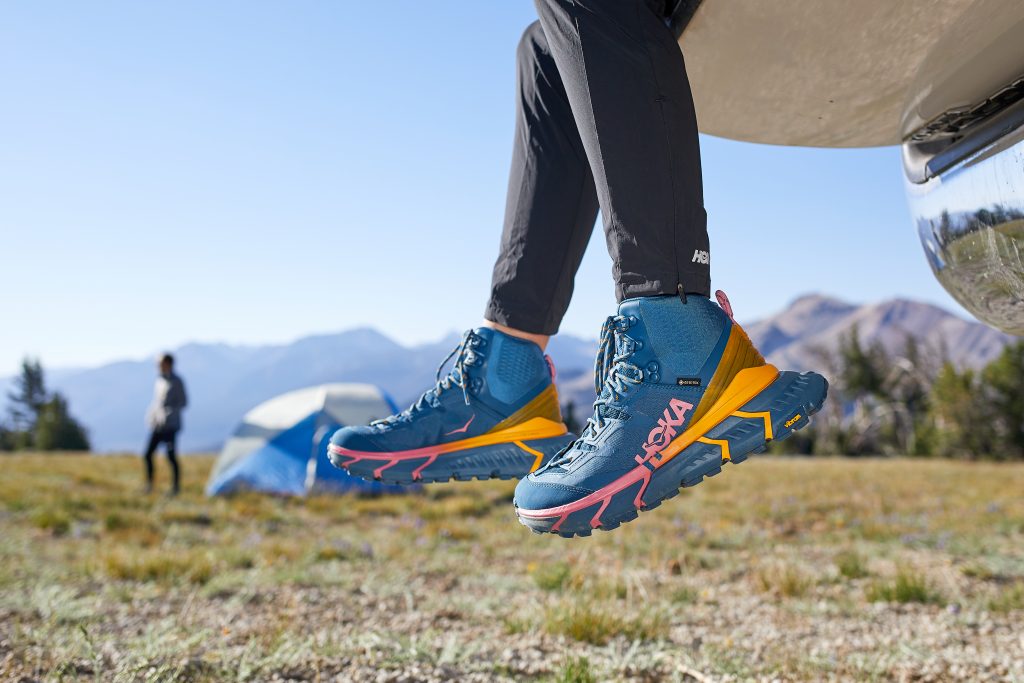
HOKA ONE ONE’s hefty new long-distance hiking boots, the TENNINE HIKE GORE-TEX, emphasize comfort and sustainability in a package unlike anything we’ve seen before. An extended heel feature called HUBBLE smooths the heel-to-toe transition, using your bodyweight to help propel forward. The boots (which HOKA has jokingly called “part hovercraft”) do differ from the tame, tapered look of typical hiking shoes, but every decision that went into making the TENNINE was informed by movement research, trail testing and little regard for the status-quo. This process of assessment sets HOKA apart. Rather than replicate styles, silhouettes or tech, HOKA’s designers aim to ideate solutions to problems plaguing athletes and hikers. We covered over 25 miles testing a pair and couldn’t have been more impressed. And their ’90s-raver-hovercraft look is certainly a conversation starter.
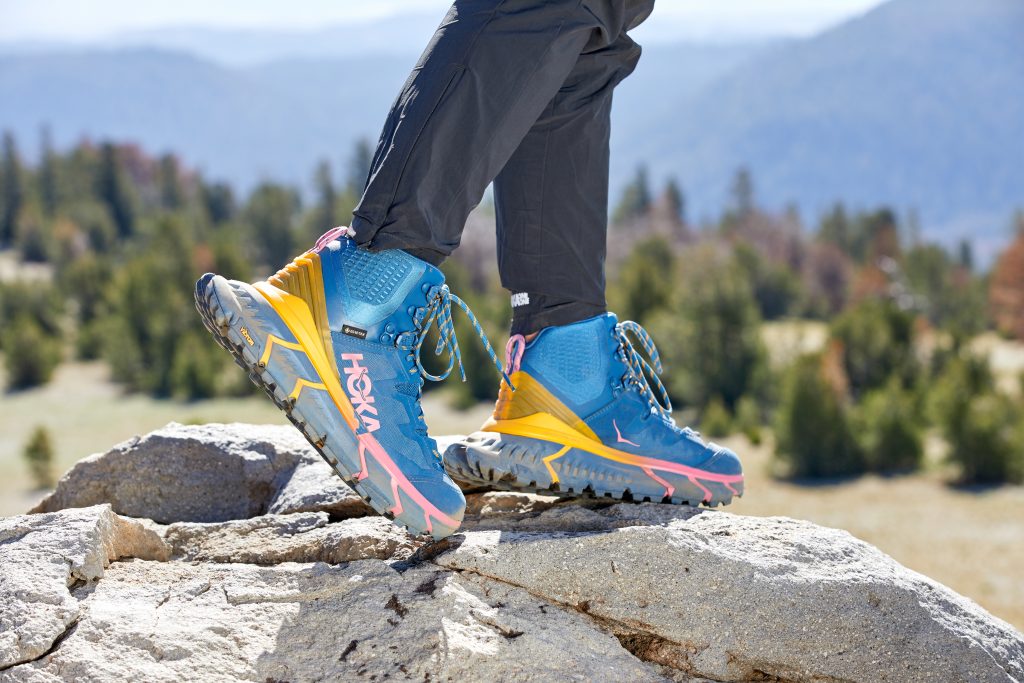
“There’s a way in which HOKA always approaches the marketplace,” Hy Rosario, the product developer behind HOKA’s TENNINE, tells us. “They always look at the problem they’re trying to solve, and they don’t necessarily apply the rules of the industry to solve that problem.” Straying from the solutions other companies or manufacturers have brought to market has allowed the brand to innovate from within—producing uppers, outsoles, midsoles and more that boast proprietary technologies. Over a decade ago, when the company was founded, many of their innovations established the brand as the go-to for all-trail runners, as they emphasized performance, proportion and speed.
Then they set themselves a goal—beginning with the original Mafate model—to make runners faster and more comfortable uphill and downhill. The larger outsoles lent stability and assisted with managing balance and tread in both directions. And by comparing the Mafate and TENNINE side by side, you realize the successes of the extended heel and outsole—it’s only grown since its inception.
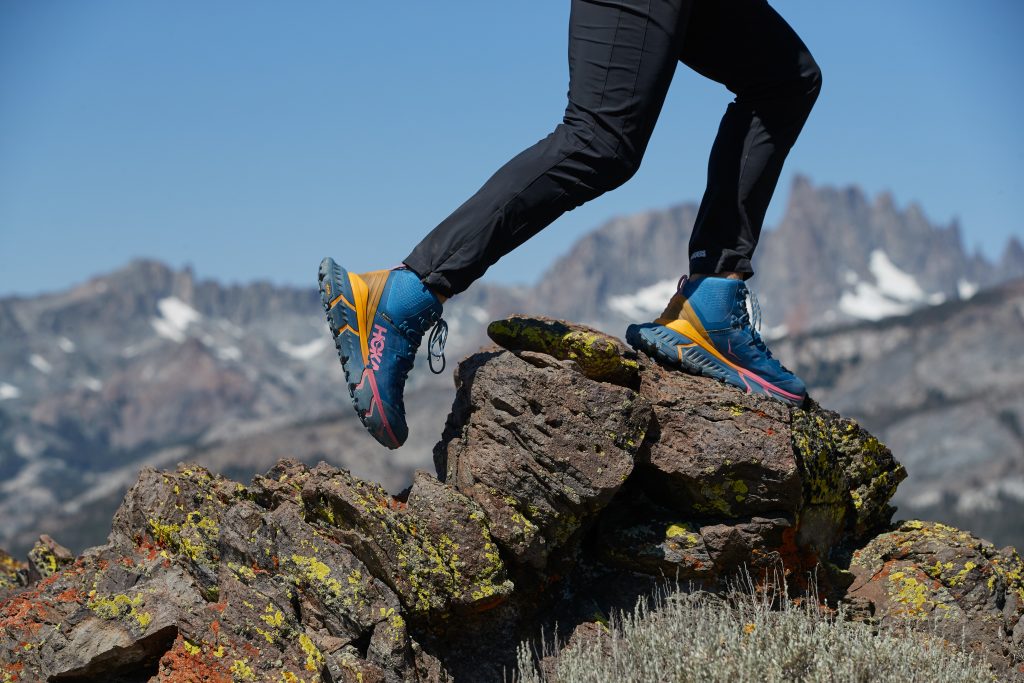
“What we realized is that when you look at hiking, most people start their hike going from the bottom to the top, and at the top, you don’t have a choice but to turn around and come back down,” Rosario begins. “On those downhill segments is where the musculature and the joints really get a lot of wear and tear, and you also happen to be tired. This is the spot where we thought that HOKA could really make a difference, which is how can we make hiking both up and downhill more enjoyable. The idea of hovercraft and a hiking shoe meeting—that’s kind of the genesis of the TENNINE project.”
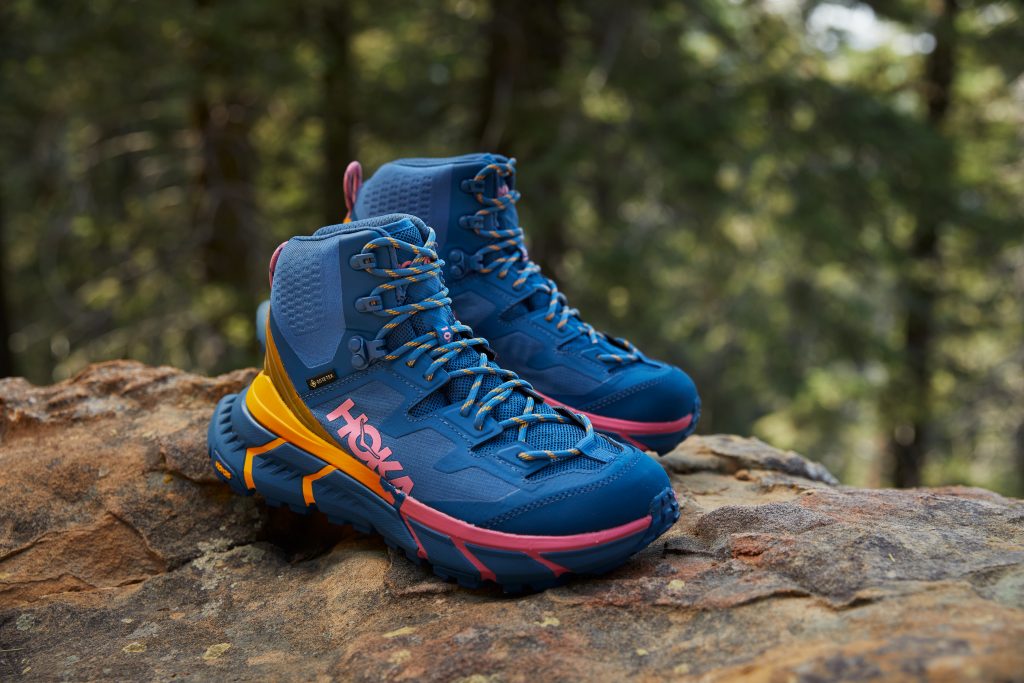
Rosario’s hovercraft comparison references the TENNINE’s ultra-plush interior cushioning and cloud-like outsole. Both extend the length of trail runs by lessening the load on the wearer’s muscles and joints, and by ensuring that they are maximizing the potential forward propulsion of each heel-to-toe transfer of power. This equation required years of testing to crack.
“Through the four different iterations of this product, we have done over 1,300 miles of actual field testing, and this shoe has been in the lab for over 142 hours—and that’s [time spent] both on our shoe and also against competitor products, because we want to make sure that we are targeting a goal that will really change the game of hiking,” Rosario continues. “We believe that with the TENNINE, the only way to do that was to do a thorough testing, both in lab to understand the biomechanics of the shoe, and also on trail to understand the experiential quality that this product delivers.”

All of this very intentional testing happened after the team had formalized plenty of the shoe’s final details. Previous silhouettes and concept models informed the broader outline of the TENNINE, while situational and comparative examining allowed designers to add finishing touches with finesse. For example, Rosario explains that the original Mafate set the standard for the heel-to-toe construction. Consecutive concepts (a collection of variations on the Mafate, which ultimately led them closer to the new TENNINE) tested what Rosario refers to as “extreme levels of engineering,” attempts at embellishing the heel’s size and stack height in order to gauge the change’s overall impact on performance and comfort. The TENNINE, he continues, is their way of introducing all of this research in a “more commercial package.”
“We knew that if took the best parts of this technology and packaged it in a more commercial way, that we could change the dynamic of what hiking is and how it interacts with the human foot,” he says. “Because if you look at what’s happened in hiking, nothing huge has transpired in the last 50 to 60 years. Most boots are replicas of each other. One might be a little lighter than the competitor’s, or one’s stiffer, or one’s more flexible. Nobody has really challenged the assumptions of what a hiking boot should be.”

Setting out with the goal of upending the status quo for the entire category pushed HOKA’s designers to consider reimagining every single element of the boot—and everything previous iterations might have overlooked. Each part of the hiking shoe works in harmony to better service the wearer. The long list includes water-repellent materials throughout (including Gore-Tex’s new sustainable Leaf laminate), more durable metal lacing hardware where needed, an abrasion-proof rubber toecap, a 100% recycled PET lining, a patented overall geometry, a proprietary compression molded EVA foam midsole, an all-new Vibram Megagrip Litebase outsole (with five-millimeter lugs) and a diamond-shaped recess in the center of the sole for the heel to sink into.
“We wanted to create a base that was more stable, which is why you’ll see that the TENNINE is a little wider. We also extended the heel, and looked at the shoe holistically in terms of its sole and outsole,” says Rosario. “There was a lot of engineering and design work done to deliver on this experience: types of foams, different foam thicknesses, and how those two interact and then all of the geometry (width, length, rocker profile). It was all very much fine-tuned to create a better hiking experience.”
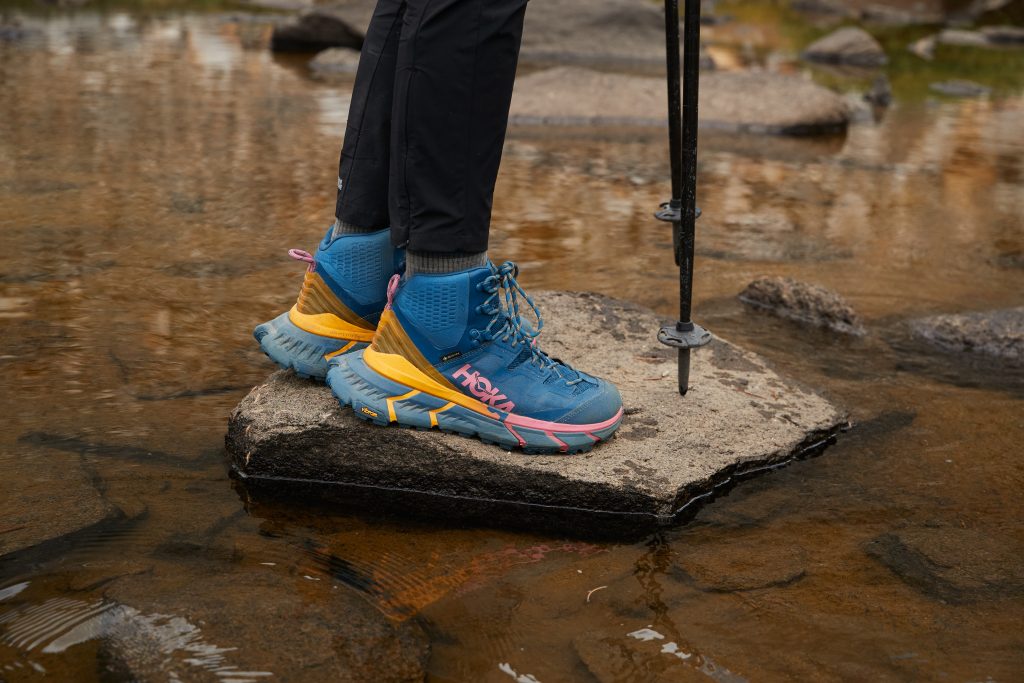
Through our test runs on trails in Upstate New York, we felt these decisions and dimensions at work. Over several 8-10 mile hikes each with around 1,500 feet of vertical, the shoes kept us balanced and buoyant but not entirely removed from the terrain. It’s a pleasant combination of floating and also feeling secure and grounded. We anticipated potential missteps given the sole size being so much bigger than anything we’ve worn before and were willing to chalk them up as an adjustment period for this more sizable footprint. However, the larger heel went unnoticed, and never inhibited our steps. In fact, the increased performance almost felt like cheating.

“We wanted to give people a unique ride, but something that was actually understandable. Sometimes products work a little but they’re not fully there,” Rosario tells CH. “And we feel like the fine-tuning has really helped the shoes deliver that holistic kind of feeling where you are getting cushioning but also feeling nimble and sensing the ground enough to be able to react accordingly.”
Images courtesy of HOKA ONE ONE












